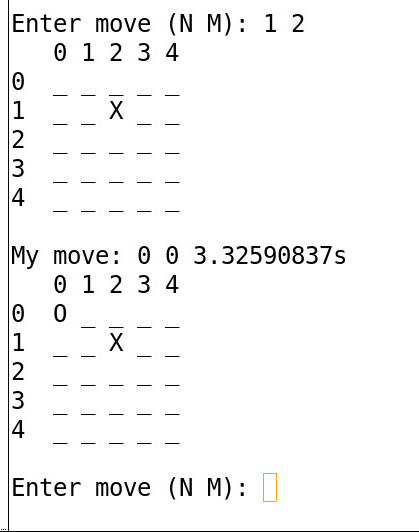Squava - the board game
Squava (or here) is a tic-tac-toe variant.
Comparison of algorithmic players
Algorithmic players Elo ratings
Played on a 5x5 grid (standard tic-tac-toe is 3x3) players take turns putting markers in spots in the grid. The first player to place 4 of their markers in a row, horizontal, diagonally or vertically, without getting only 3 in a row wins. Any play who gets 3 of their markers in a row without getting 4 in a row, loses. You can win outright, or you can lose outright.
There is a slight ambiguity in the rules: if you make a 4-in-a-row and make a 3-in-a-row with a single play, have you won or lost?
I don’t think there are any “cat” or tie games like most games in tic-tac-toe, but I can’t prove it.
Squava makes a decent pen-and-paper game. It has openings, a middle game and an end game. It’s not so complex that a 10-year-old human can’t play. You should give it a try.
I wrote a series of computer programs that can play against a human, or against each other. I usually lose interest in improving a given game program after it can beat me some of the time - I like programs to keep me on my toes. The Monte Carlo Tree Search Squava player is just such a program, as is the Alpha/Beta minimax program. The MCTS player is more fun to play: it tries different things, it doesn’t just mechanically go for your throat like the Alpha/Beta Minimax versions.

